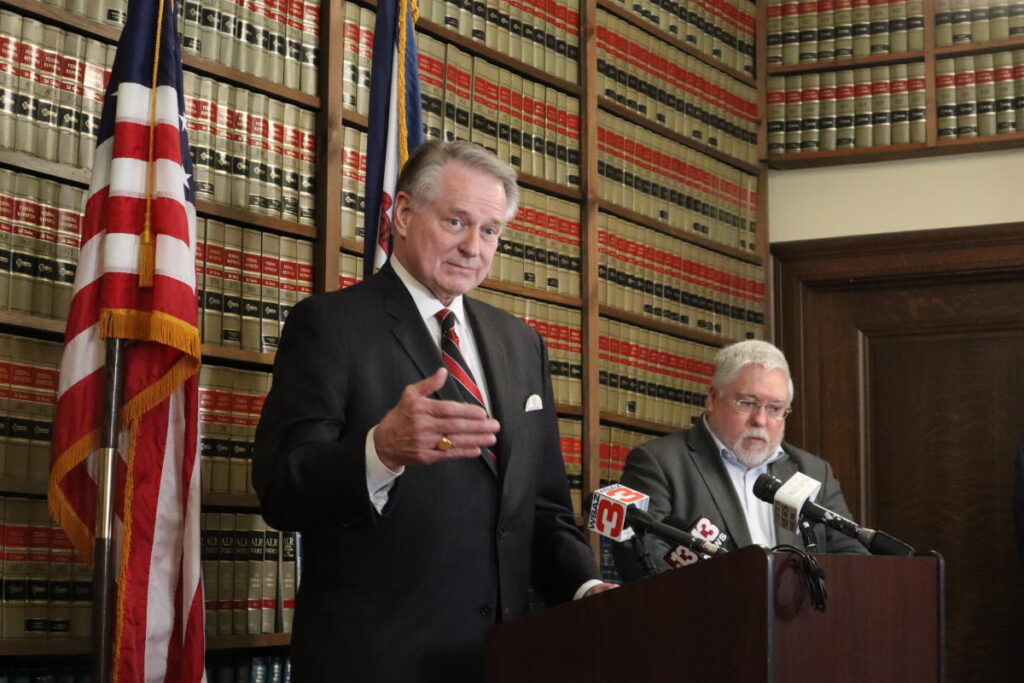In West Virginia, the looming governor’s race serves as a potential referendum on abortion rights in the aftermath of the Supreme Court’s overturning of Roe v. Wade, an issue that sharply divides candidates. State Attorney General Patrick Morrisey, the Republican candidate, staunchly supports the existing comprehensive ban on abortion, which allows very few exceptions. He argues from a “pro-life state” perspective and points to a 2018 constitutional amendment, which indicated public support for restricting access to abortion funding. However, this amendment was passed during a midterm election with low voter turnout and may not reflect current attitudes toward total abortion access in West Virginia. Conversely, Huntington Mayor Steve Williams, representing the Democratic side, attempted to introduce an abortion referendum to the ballot but faced legislative barriers due to the Republican supermajority. Williams believes that a significant number of voters, irrespective of party affiliation, are dissatisfied with the prevailing restrictions and sees the need for a change.
The political landscape around abortion in West Virginia showcases a notable divide that could impact voter sentiment. Although the state is traditionally Republican, with strong support for Trump in past elections, Williams’ push for reproductive rights may resonate deeper than anticipated. He has engaged with a diverse coalition of women across political affiliations who are concerned about legislative restrictions on abortion. Williams posits that “freedom will be on the ballot,” highlighting his commitment to advocating for abortion rights should he win the governorship. He has vowed to pressure lawmakers to reconsider the restrictions or, if necessary, to act through executive order to restore access to abortion services. This stands in stark contrast to Morrisey’s position, who criticizes Williams for allegedly aligning with a far-left agenda that he claims West Virginians do not support.
The legislative process in West Virginia complicates the possibility of a direct ballot initiative on abortion. With no citizen-driven ballot initiative system, the state relies solely on legislative votes, which have been predominantly against expanding abortion rights due to Republican dominance in both chambers. Williams attempted to leverage public sentiment by collecting signatures to revive a ballot referendum, but his efforts were sidelined by a legislature that remains resistant. Notably, in other conservative states like Kansas and Kentucky, voters have successfully passed amendments supporting abortion rights, indicating a potential disconnect between legislative actions and public opinion. The implications of these trends suggest that while West Virginia aligns politically as a conservative stronghold, the variations within voter perspectives on abortion may be significant and influential.
Amidst this backdrop, Morrisey emphasizes his belief in the possibility of political change through electoral processes, asserting that discontent with lawmakers can lead to their removal. Yet, the public’s sentiment appears increasingly fraught with skepticism toward the legislature. Advocacy groups like WV FREE are spearheading efforts to inform the electorate about the details of West Virginia’s restrictive laws. Many residents may be unaware of how stringent the current abortion laws are—particularly the limited exceptions for victims of assault, which include reporting requirements that pose additional barriers. Chapman Pomponio, executive director of WV FREE, expresses confidence that if the public were given the opportunity, they would support abortion rights—but acknowledges the pervasive feelings of distrust and disenfranchisement that voters have grown to harbor toward their elected officials.
The repeated failures to engage in meaningful discussions on abortion rights within the state legislature contribute to this atmosphere of distrust. After the U.S. Supreme Court’s decision, West Virginia officials convened to debate the restrictions, but the resultant law was ultimately passed with vague public discourse and without sufficient opportunities for citizens to voice their opinions. Protest movements at the state capitol highlight the public’s frustration, but such outcries have not yielded significant legislative change. This lack of engagement from lawmakers may discourage voter turnout in the upcoming election, as individuals feel their voices may not be heard regardless of their vote. The sense that officials disregard constituent views fosters a challenging environment for advocates seeking to mobilize voters on reproductive rights issues.
In the midst of this tumultuous political landscape, the financial disparity in campaign spending further skews the race. While Republicans have invested heavily—over $36 million—into promoting Morrisey’s campaign, Democrats, including Williams, have garnered comparatively minimal resources. The financial gap could hinder Williams’ ability to effectively communicate his message around reproductive rights and educate voters about the implications of the current legislation. As the election season progresses, the unique dynamics of West Virginia’s political climate, coupled with varying public opinions on abortion, create an intricate tapestry that could ultimately influence both the outcome of the gubernatorial race and the broader discourse surrounding reproductive rights in the state. The interplay of these factors may establish a new narrative regarding reproductive freedoms in West Virginia, especially as citizens remain increasingly engaged with the implications of their legislative choices.

